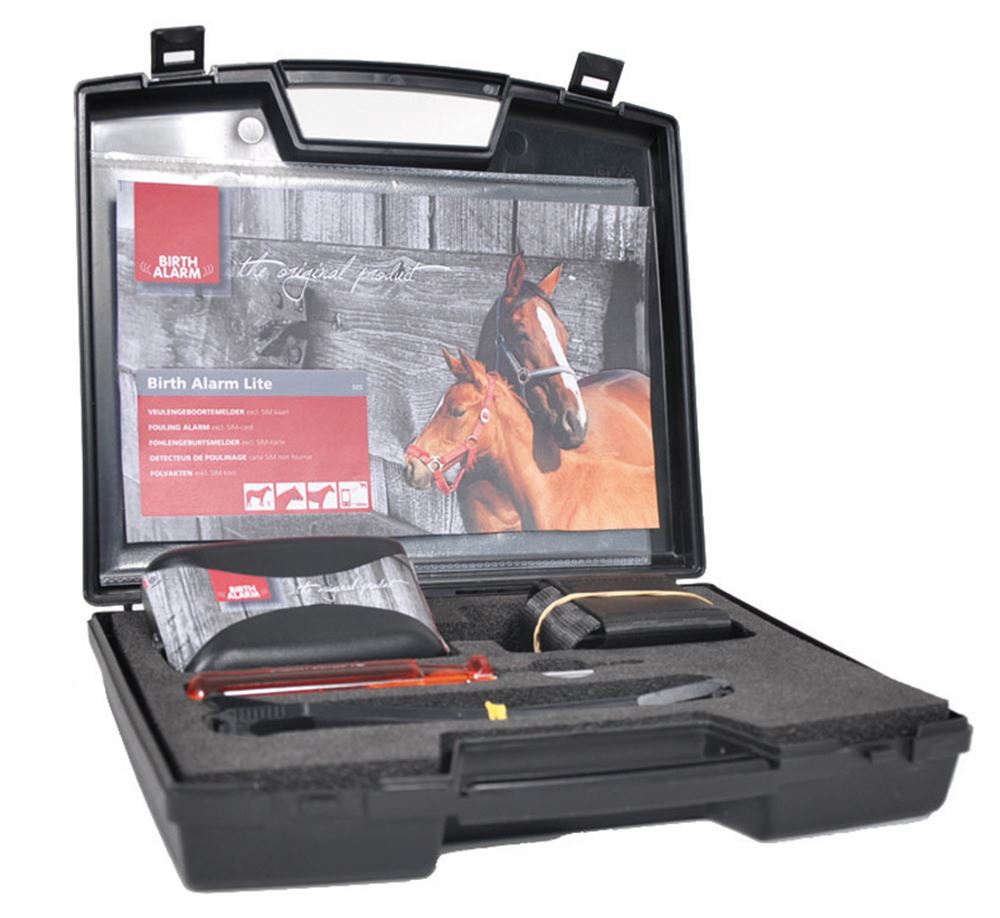Foal Birth Alarm Lite for Rent23 March 2018 | Beth Foaling can take place any tie of year, but April and May are very popular in the UK, due to the milder weather.
If you have a mare waiting for a foal, it can be an exciting yet anxious time. Good preparation will minimize stress for you, your mare and your foal. Foaling is usually a relatively straight forward event, but problems can arise which must be dealt with quickly. Foaling often occurs in the night, so you need to be on stand-by to help, if needed. Good veterinary advice is essential. A birth alarm can also help warn you when your mare is getting contractions and about to start the exciting birthing process. A birth alarm is usually strapped to your mare's bridal (it is non invasive and can be attached easily by you - no need for a vet). The alarm is motion based, and sends an alarm to two mobile phones or landlines to let you know when your mare starts going into labour. It is very reliable. The alarms can be used many times over.
If you are planning on multiple pregnancies and foals, then investing in your own alarm is a good choice. If it is a one-off special event, then renting the alarm for a couple of weeks is probably the best option for you. A birth alarm will help you keep your mare and foal safe, and make sure that you don't miss the special moment.
Rent: £50/week Purchase: £379.00 https://www.farmcareuk.com/category-112.html Foaling Process: Peaceful and clean environment: Your mare needs a large well ventilated box, with lots of clean dust free straw and good quality hay. Your mare's tail should be bandaged up just before foaling and her hindquarters, legs, vulva and udder should be carefully washed with an antiseptic solution. Stage 1: The mare's uterus starts contracting, moving the foal into the correct position. The mare becomes restless, sweats and may show colic-like signs. Foaling will usually occur within the next few hours. Stage 2: The waters and membrane around the foal break.Contractions increase in intensity, and may become visible. The white membranes of the sac with the foal appear at the vulva lips. The foal should have its front two legs with its muzzle resting on top of the forelegs, in a diving position. The foal should be delivered within 15 to 20 minutes. Stage 3: The foetal membranes will be expelled, within a few hours of foaling. Mares typically follow the timing outlined above. Any delays could indicate that there is a problem and you should seek veterinary advice if in any doubt.
There are several problems that can occur during labour. The foal may be in the wrong position, which can be very dangerous and may require a c-section. If the mare does not expel the foetal membranes it can also be very dangerous and veterinary advice and help will be required.
Immediately after birth, you should watch your foal. - within 5 minutes your foal should be sit up and lift its head - within 5 to 10 minutes your foal should have a strong suck reflex - by 1 hour your foal should be able to stand and should be looking for an udder - within 2 hours your foal should be able to suck from the mare Any delays may suggest a problem and veterinary advice is essential.
|
|




 Basket |
Basket | 